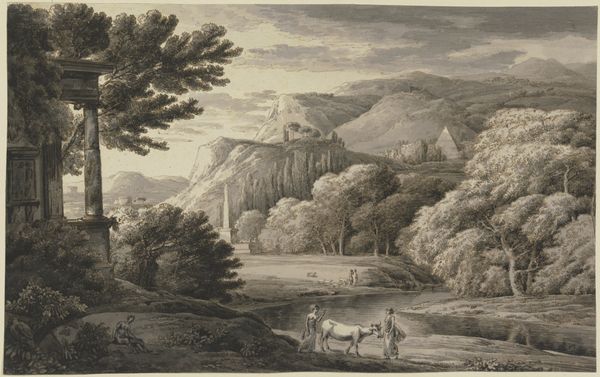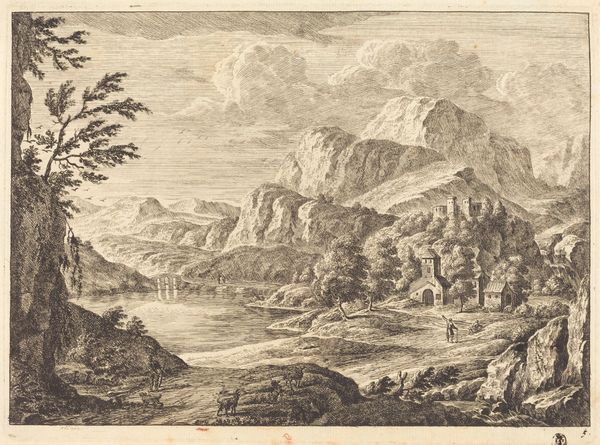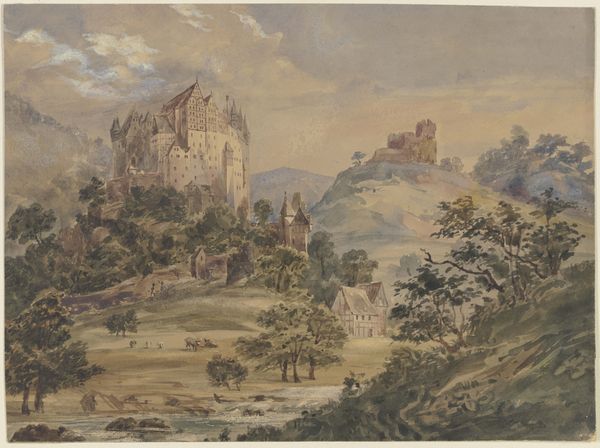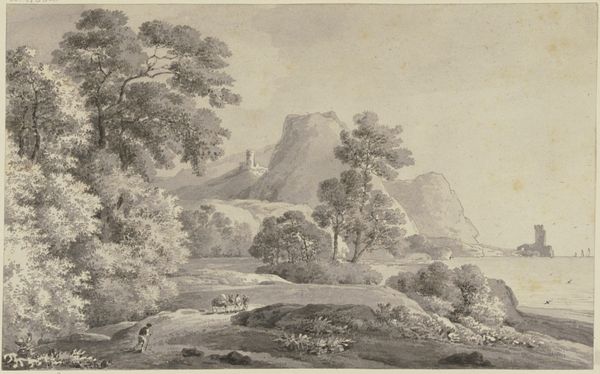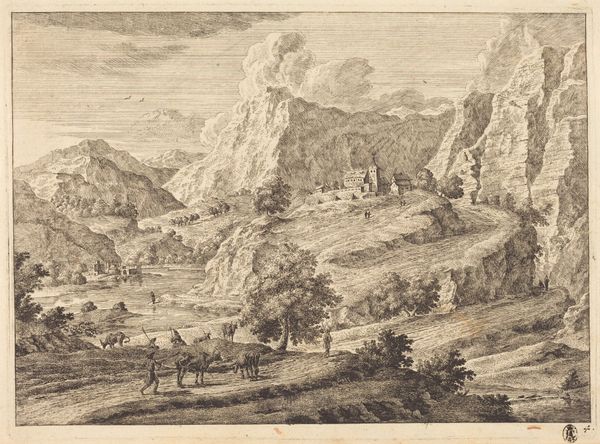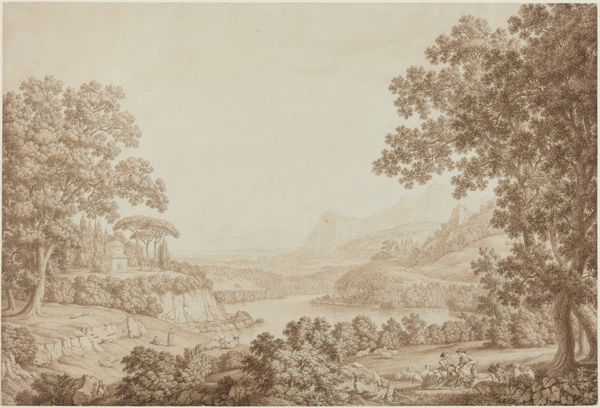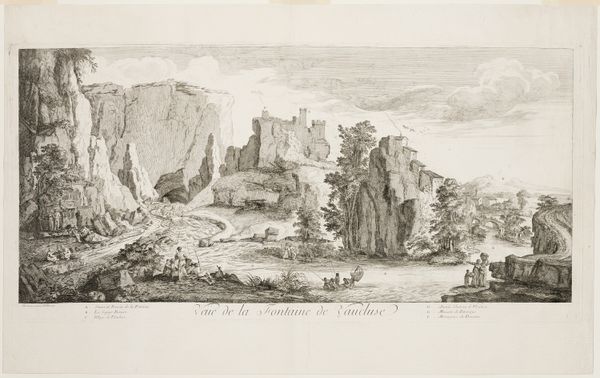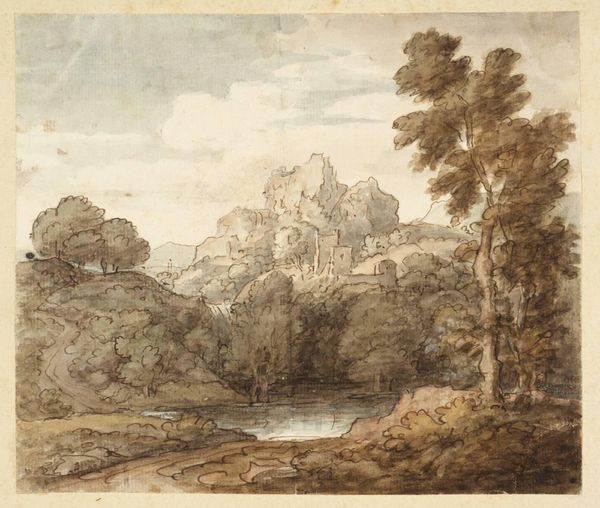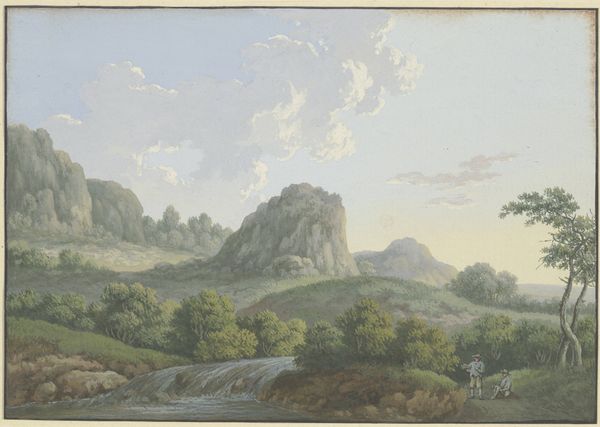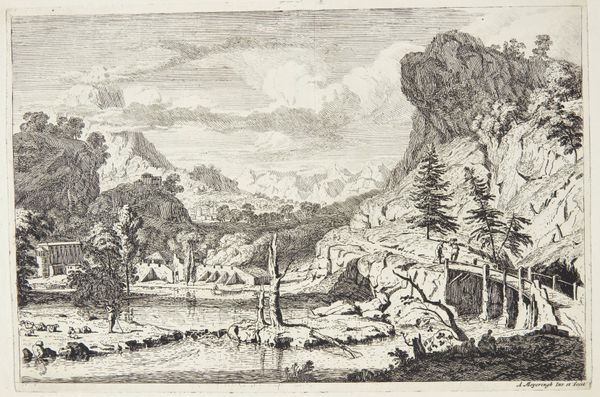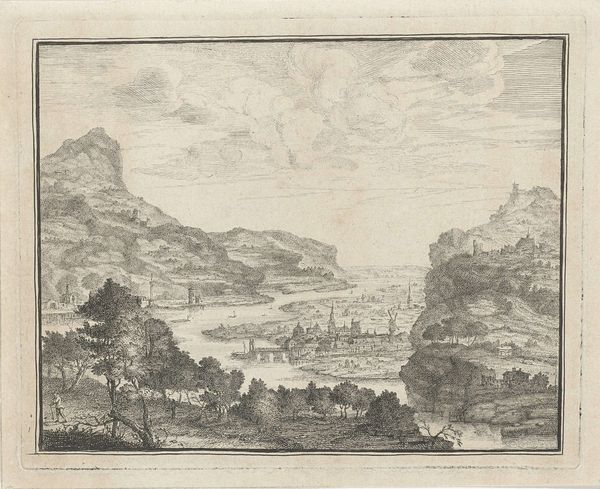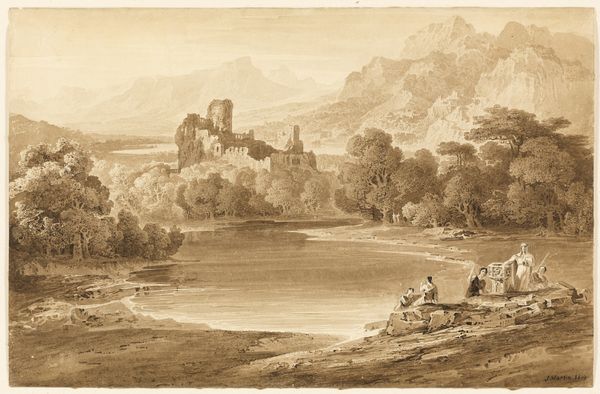
Dimensions: 307 × 384 mm
Copyright: Public Domain
Robert Adam made this drawing with pen and gray ink and gray wash sometime in the late 18th century. It’s a fabricated view of an idealized, sublime landscape complete with mountains, a river, and a ruined castle. It's important to remember that Adam was a Scottish architect working in Britain. He popularized the neoclassical style, designing buildings and interiors that looked back to ancient Greece and Rome. In Britain at this time, there was a fascination with the picturesque and the sublime that fueled a fashion for ruins, both real and imagined. Grand Tourists would travel around Europe to see ancient monuments, while landowners back home would build follies on their estates: sham ruins meant to evoke the past. But what does it mean to conjure the past in this way? We have to ask what this nostalgia does, whose interests it serves. It can naturalize existing social hierarchies, suggesting that present inequalities are simply the inevitable result of a long historical process. Only through careful historical research can we begin to understand the social function of these images.
Comments
No comments
Be the first to comment and join the conversation on the ultimate creative platform.
